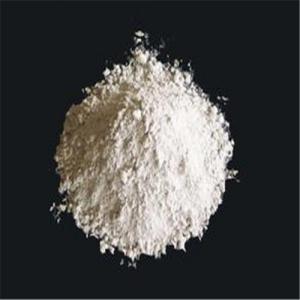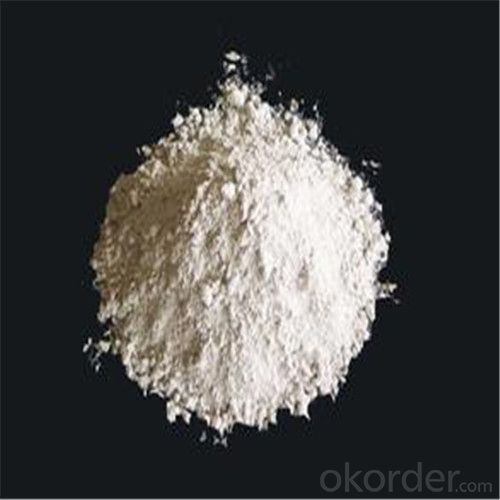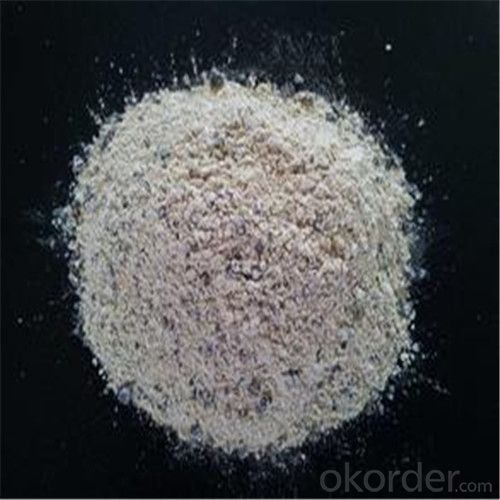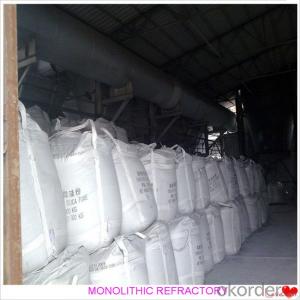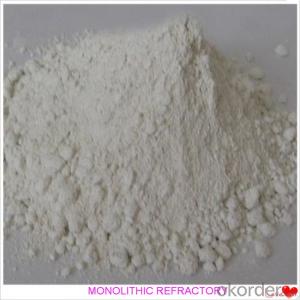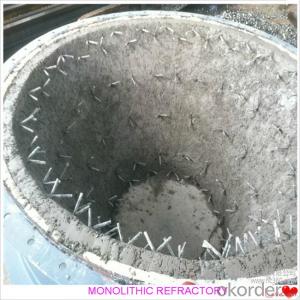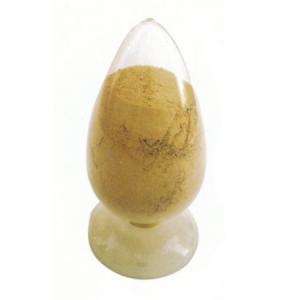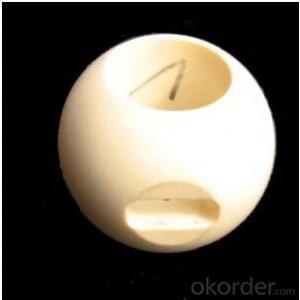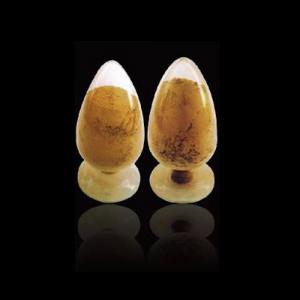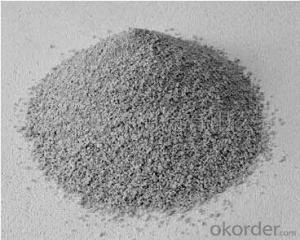Monolithic Refractories for Iron and Steel Industry - Lightweight Castable Refractory Castable by Casting
- Loading Port:
- Shanghai
- Payment Terms:
- TT or LC
- Min Order Qty:
- 20000 kg
- Supply Capability:
- 10000000000 kg/month
OKorder Service Pledge
OKorder Financial Service
You Might Also Like
General Information of Lightweight castable
Lightweight castable is made from lightweight aggregate of lightweight ceramic grains and sand grog and floating beads, mixed with binding agent of aluminate cement and superfine powder, having different aggregates of different materials to meet the design requirements.
Features of Lightweight Castable
◆High strength
◆Good wear resistance
◆Excellent heat-insulation
◆Small reheating liner change
Application of Lightweight Castable
Chimney linings and heat-insulating
Wear proof layers of the
Technical Data of Lightweight Castable
| Technical Data of Lightweight Castable | ||||||
| Physical Properties | LC-1.4 | LC-1.2 | LC-1.0 | LC-0.9 | LC-0.8 | |
| Classification Temperature | ℃ | 1200 | 1100 | 1100 | 1000 | 1000 |
| ℉ | 2190 | 2010 | 2010 | 1830 | 1830 | |
| Buk Densiy(g/cm) | 110℃×24h | 1.4 | 1.2 | 1.0 | 0.9 | 0.8 |
| 815cx3h | 1.3 | 1.1 | 0.9 | 0.8 | 0.7 | |
| Compressive Strength (Mpa) | 110℃×24h | 12 | 10 | 7 | 4.5 | 4 |
| 815cx3h | 10 | 8 | 6 | 4 | 3 | |
| Modulus of Rupture(Mpa) | 110℃×24h | 3 | 2 | 1.5 | 1.0 | 0.8 |
| 815cx3h | 2.5 | 1.5 | 1.0 | 0.8 | 0.5 | |
| Permanent Liner Change (%) | 815℃×3h | 0.2 | 0.2 | 0.2 | 0.2 | 0.2 |
| Thermal Conductivity(W/m.k) | 350℃ | 0.35 | 0.30 | 0.25 | 0.23 | 0.21 |
Photo of Lightweight Castable
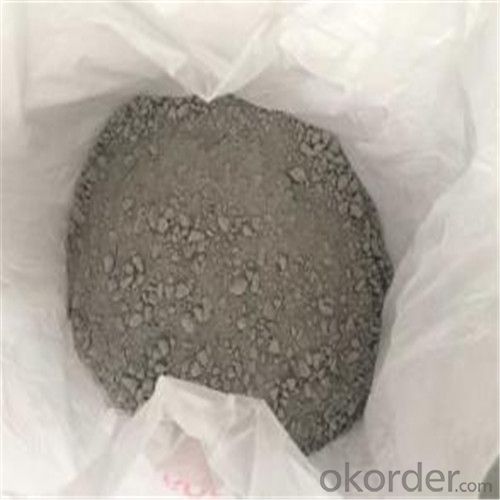
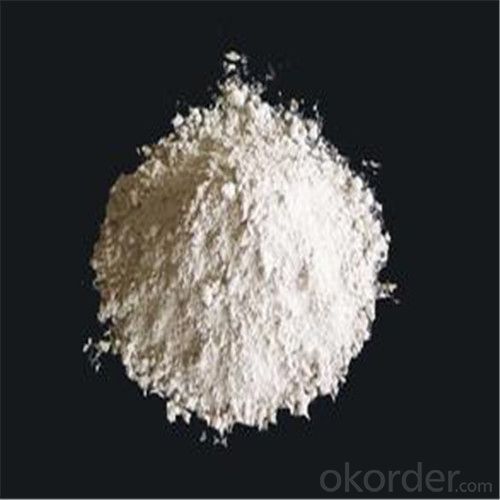
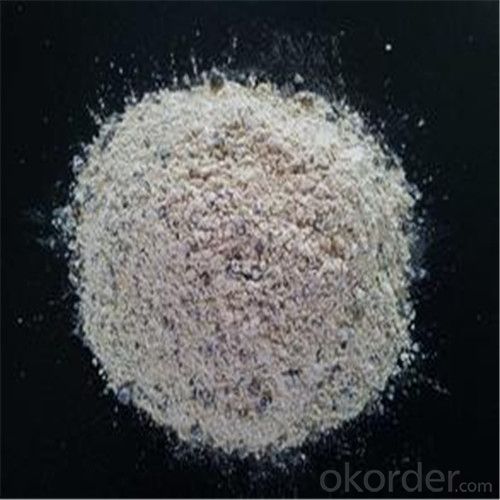
- Q: How do monolithic refractories impact the quality of iron and steel products?
- The quality of iron and steel products is greatly influenced by monolithic refractories. These refractories are extensively used in the lining of furnaces and other high-temperature environments where iron and steel undergo processing. To begin with, monolithic refractories play a vital role in insulating and safeguarding the furnace lining from the intense heat generated during the manufacturing of iron and steel. By maintaining the desired temperature, these refractories ensure consistent and proper heating of the metal, thereby achieving the desired product quality. Inadequate insulation would result in significant heat loss, leading to inefficient energy consumption and inconsistent product quality. Additionally, monolithic refractories have a significant impact on the overall cleanliness of iron and steel. During the production process, impurities and slag are formed, which can contaminate the metal if not managed properly. Refractories with high resistance to slag penetration and corrosion prevent these impurities from infiltrating the metal, ensuring a cleaner and purer final product. Moreover, monolithic refractories also contribute to the mechanical strength and durability of the furnace lining. The lining must withstand the harsh conditions and repeated thermal shocks encountered during the production process of iron and steel. A sturdy and well-designed refractory lining can resist cracking, spalling, and erosion, thereby prolonging the furnace's lifespan and reducing the risk of downtime. In conclusion, monolithic refractories have a profound impact on the quality of iron and steel products. They provide thermal insulation, prevent contamination, and ensure the mechanical integrity of the furnace lining. Manufacturers can optimize their production processes, enhance product quality, and improve overall operational efficiency by selecting the appropriate refractory material and maintaining it correctly.
- Q: How are monolithic refractories repaired or replaced in iron and steel facilities?
- Monolithic refractories are commonly used in iron and steel facilities due to their superior thermal and mechanical properties. These refractories are designed to withstand high temperatures, thermal shocks, and chemical attacks. However, over time, they may experience wear and tear, leading to the need for repair or replacement. The repair or replacement process for monolithic refractories in iron and steel facilities generally involves the following steps: 1. Inspection: A thorough inspection of the refractory lining is conducted to identify areas that require repair or replacement. This inspection may involve visual examination, thermal imaging, or other non-destructive testing techniques to assess the extent of damage. 2. Removal of damaged material: The damaged monolithic refractory material is carefully removed using appropriate tools and equipment. This step ensures that the new refractory material will adhere properly to the substrate. 3. Surface preparation: The substrate or lining surface is prepared to enhance the bonding between the new refractory material and the existing structure. This may involve cleaning, grinding, or shot blasting to remove loose particles, contaminants, and any remaining damaged material. 4. Selection of repair material: Depending on the specific requirements and operating conditions, a suitable repair material is selected. This may involve choosing a similar monolithic refractory material or a specific repair product designed for the application. 5. Mixing and installation: The repair material is mixed according to the manufacturer's instructions, ensuring proper consistency and workability. It is then applied to the prepared surface using various techniques such as troweling, spraying, or casting. Care is taken to achieve the desired thickness and proper consolidation of the repair material. 6. Curing and drying: After installation, the repaired refractory material is allowed to cure and dry as per the manufacturer's recommendations. This step is critical to achieve the desired strength and thermal properties of the refractory lining. 7. Quality control: Once the repair or replacement is complete, quality control measures are taken to ensure the integrity and effectiveness of the repaired/refurbished refractory lining. This may involve conducting tests like thermal conductivity measurements, density checks, or visual inspections. It is important to note that the repair or replacement process for monolithic refractories may vary depending on the specific requirements and conditions of each iron and steel facility. Additionally, it is recommended to consult with refractory experts or manufacturers to ensure the correct selection of materials and proper execution of the repair or replacement procedure.
- Q: How do monolithic refractories improve the quality and consistency of iron and steel products?
- Monolithic refractories play a crucial role in improving the quality and consistency of iron and steel products. These refractories are unshaped and can be easily molded and installed, providing several advantages over traditional brick refractories. Firstly, monolithic refractories offer better thermal insulation properties, ensuring effective heat management during the production process. By maintaining consistent and controlled temperatures, these refractories prevent thermal shocks and minimize thermal gradients, leading to reduced cracking and distortion in the final products. This results in improved dimensional stability and overall better quality. Furthermore, monolithic refractories have excellent resistance to thermal spalling and erosion. They can withstand high temperatures, chemical attacks, and mechanical stress, protecting the lining of the furnaces and vessels used in iron and steel production. This resistance enhances the durability and reliability of refractory linings, preventing premature failure and extending the lifespan of the equipment. Another advantage of monolithic refractories is their ability to provide a seamless lining. Unlike brick refractories, which have joints and gaps that can lead to heat loss and uneven distribution, monolithic refractories create a continuous lining with no weak points. This ensures uniform heat distribution and minimizes the risk of hotspots or cold spots, resulting in consistent and reliable iron and steel products. Monolithic refractories also offer flexibility in design and installation. They can be customized to fit various shapes and sizes, allowing for better furnace design optimization. This flexibility enables efficient use of space, improved heat transfer, and reduced energy consumption, all of which contribute to the overall quality and consistency of the final iron and steel products. In summary, monolithic refractories improve the quality and consistency of iron and steel products by providing superior thermal insulation, resistance to thermal spalling and erosion, seamless linings, and flexibility in design and installation. These refractories enhance the efficiency and reliability of the production process, resulting in higher-quality final products that meet the industry's stringent standards.
- Q: How do monolithic refractories withstand the thermal cycling in coke oven applications?
- Monolithic refractories are specifically designed to withstand the harsh conditions of thermal cycling in coke oven applications. Thermal cycling refers to the repetitive heating and cooling cycles that occur in these high-temperature environments. One of the key factors that enables monolithic refractories to withstand thermal cycling is their composition. They are typically made from a combination of different refractory materials, such as high-alumina, silica, and magnesia, which provide excellent thermal shock resistance. These materials have low thermal conductivity and high thermal expansion properties, allowing them to expand and contract without cracking or spalling under extreme temperature changes. Moreover, monolithic refractories have excellent bonding and adhesion properties, allowing them to form a strong and cohesive structure. This ensures that they can withstand the mechanical stresses caused by the thermal cycling process. Additionally, monolithic refractories can be installed in place through various techniques, such as gunning, casting, or ramming, which further enhances their resistance to thermal cycling. Furthermore, the presence of specialized additives and bonding agents in monolithic refractories improves their resistance to thermal cycling. These additives can enhance the refractory's ability to absorb thermal shock and minimize cracking, thus increasing its durability and longevity in coke oven applications. Overall, monolithic refractories' ability to withstand thermal cycling in coke oven applications can be attributed to their carefully formulated composition, strong bonding properties, and the incorporation of specialized additives. These characteristics make them highly reliable and suitable for the extreme temperature fluctuations experienced in coke oven operations.
- Q: How do monolithic refractories resist chemical attack from molten metals and slags?
- Monolithic refractories resist chemical attack from molten metals and slags due to their chemical composition and structure. They are typically designed with high levels of resistance to corrosion and erosion, making them suitable for harsh environments. Additionally, they have low porosity, which reduces the penetration of molten metals and slags into the refractory material. The presence of certain additives and bonding agents further enhances their chemical resistance, preventing reactions between the refractory and the molten substances. Overall, monolithic refractories offer a strong barrier against chemical attack, ensuring their durability and longevity in such demanding conditions.
- Q: What are monolithic refractories?
- Monolithic refractories are a type of heat-resistant materials used to line high-temperature industrial equipment such as furnaces, kilns, and reactors. Unlike traditional refractories, which are made of pre-formed bricks or shapes, monolithic refractories are a single, solid piece that can be easily shaped and installed. They are composed of various aggregates, binders, and additives, providing excellent thermal insulation and resistance to extreme temperatures, chemical attacks, and mechanical stress. Monolithic refractories offer flexibility, cost-effectiveness, and improved installation efficiency compared to traditional brick refractories.
- Q: How do monolithic refractories perform in electric arc furnace roof applications?
- Due to their unique properties and characteristics, monolithic refractories are extremely effective when used in electric arc furnace (EAF) roof applications. Comprised of a single, solid material, these refractories offer several advantages specific to this application. To begin with, monolithic refractories provide exceptional thermal insulation, a critical factor in EAF roof applications. Traditional brick refractories can suffer structural damage from the intense heat generated in the furnace. However, monolithic refractories possess a higher resistance to thermal shock, reducing the risk of cracking and spalling. This ensures that they maintain their integrity and insulation properties even under extreme temperature conditions. Furthermore, monolithic refractories exhibit high strength and abrasion resistance, guaranteeing their durability and longevity in EAF roof applications. The roof of an electric arc furnace is subjected to harsh conditions, including the impact of scrap materials and the erosive effects of molten metal and slag. Monolithic refractories are specifically designed to withstand these challenges, offering superior resistance to mechanical wear and erosion. Another advantage of monolithic refractories lies in their ease of installation. Unlike traditional brick refractories, which necessitate time-consuming and complex installation processes, monolithic refractories can be applied rapidly and efficiently. They can be cast, gunned, or sprayed onto the roof surface, adapting to any shape or contour. Consequently, installation or repair downtime is reduced significantly. Moreover, monolithic refractories contribute to increased energy efficiency in EAF roof applications. Their superior insulation properties minimize heat loss, resulting in reduced energy consumption and cost savings. This is particularly crucial for electric arc furnaces, as their efficiency and productivity heavily rely on maintaining high temperatures for metal melting and processing. Any heat loss can have a significant impact on these factors. In conclusion, monolithic refractories are highly suitable for electric arc furnace roof applications due to their exceptional thermal insulation, strength, abrasion resistance, ease of installation, and energy efficiency. These refractories offer significant advantages over traditional brick refractories, ensuring optimal performance and extended service life in the demanding environment of an electric arc furnace.
- Q: How do monolithic refractories contribute to the reduction of emissions in iron and steel plants?
- Monolithic refractories play a crucial role in reducing emissions in iron and steel plants by providing various benefits and solutions to the environmental challenges faced by these industries. Firstly, monolithic refractories are used to line the high-temperature zones of furnaces, such as blast furnaces and electric arc furnaces, that are integral to the iron and steel production processes. These refractories have excellent thermal insulation properties, which help to minimize heat loss and improve energy efficiency. By reducing heat loss, less fuel is required to maintain the desired temperature, resulting in lower energy consumption and subsequently lower emissions. Furthermore, monolithic refractories also contribute to emissions reduction by enhancing the combustion process. They are designed to resist thermal shock and withstand extreme temperatures, ensuring that the furnaces operate at optimal conditions. This, in turn, leads to more efficient combustion of fuels and raw materials, reducing the release of harmful gases and pollutants into the atmosphere. In addition to their thermal properties, monolithic refractories also possess excellent resistance to chemical attacks and corrosion. This is particularly important in iron and steel plants, where aggressive substances such as molten metal, slag, and gases are present. By providing a protective lining, these refractories prevent the degradation of furnace walls and other equipment, reducing the risk of leaks and emissions. Moreover, monolithic refractories are often used in the construction of pollution control devices, such as flue gas desulfurization systems and baghouses. These systems are designed to capture and remove pollutants from the flue gases generated during iron and steel production. The use of refractories in these applications ensures the durability and longevity of these systems, allowing them to operate efficiently and effectively in reducing emissions. Overall, monolithic refractories contribute significantly to emissions reduction in iron and steel plants through improved energy efficiency, enhanced combustion, corrosion resistance, and support for pollution control systems. By implementing these refractories, the industry can minimize its environmental footprint and move towards more sustainable and responsible production processes.
- Q: How do monolithic refractories help in enhancing the durability of iron and steel equipment?
- Monolithic refractories play a vital role in increasing the durability of iron and steel equipment. They offer high resistance to extreme temperatures, chemical attack, and mechanical wear. Unlike traditional brick or castable refractories, monolithic refractories are made from a single, uniform material, making them stronger and more reliable. The ability of monolithic refractories to withstand high temperatures is crucial in iron and steel manufacturing processes. They can endure temperatures above 3000°F (1650°C) without losing their structural integrity, preventing premature equipment failure. This thermal resistance helps maintain the shape and structure of the refractory lining, ensuring efficient and consistent equipment performance. In addition to their heat resistance, monolithic refractories also possess excellent chemical resistance. This is important because iron and steel equipment often comes into contact with corrosive substances like molten metal, slag, and various chemicals. The ability of monolithic refractories to resist chemical attack prevents degradation and erosion of the equipment's lining, extending its lifespan. Moreover, monolithic refractories provide exceptional mechanical strength and wear resistance. The equipment is constantly exposed to abrasive materials, physical impacts, and mechanical stress, which can cause severe damage. However, the dense and compact structure of monolithic refractories makes them highly resistant to mechanical wear, minimizing the risk of erosion and spalling. The flexibility and versatility of monolithic refractories further enhance the durability of iron and steel equipment. They can be easily molded, shaped, and installed in complex geometries, ensuring a tight and precise fit. This eliminates the formation of gaps or weak points, which could result in thermal or chemical leakage, reducing the risk of equipment failure. In conclusion, the use of monolithic refractories significantly improves the durability of iron and steel equipment. They offer exceptional resistance to high temperatures, chemical attack, and mechanical wear. By ensuring the longevity and reliability of the equipment, monolithic refractories enhance operational efficiency and cost-effectiveness in the iron and steel industry.
- Q: What are the main factors affecting the erosion resistance of monolithic refractories?
- The erosion resistance of monolithic refractories is influenced by several key factors. These factors include the chemical composition of the refractory material, the microstructure of the material, the temperature and environment in which it is used, and the mechanical properties of the material. The chemical composition of the monolithic refractory plays a crucial role in its erosion resistance. Certain chemical elements and compounds can enhance the resistance of the refractory to erosion, while others may make it more susceptible. For example, the addition of alumina (Al2O3) in the refractory composition can improve its resistance to erosion, as it forms a protective layer on the surface. On the other hand, the presence of impurities or excess amounts of certain elements can weaken the refractory and increase its susceptibility to erosion. The microstructure of the monolithic refractory is another important factor affecting erosion resistance. The refractory's microstructure refers to the arrangement and distribution of its constituent particles. A well-structured microstructure with a uniform distribution of particles can provide better erosion resistance as it ensures a more even distribution of load during exposure to erosive forces. Conversely, a poorly structured microstructure with clusters or weak bonding between particles may lead to localized erosion and failure. The temperature and environment in which the refractory is used also significantly influence erosion resistance. High temperatures can cause thermal stresses, chemical reactions, and phase changes in the refractory material, all of which can affect its erosion resistance. Additionally, the presence of corrosive gases, liquids, or slags can accelerate erosion by promoting chemical reactions or attacking the refractory material, leading to its degradation. Lastly, the mechanical properties of the monolithic refractory, such as its strength, hardness, and toughness, contribute to erosion resistance. A refractory with higher mechanical strength and hardness can withstand erosive forces better than a weaker material. Similarly, a higher toughness helps the refractory resist cracking or spalling when subjected to impact or thermal shock, reducing its vulnerability to erosion. In summary, the erosion resistance of monolithic refractories is influenced by the chemical composition, microstructure, temperature and environment, and mechanical properties of the material. Understanding and optimizing these factors can help in developing refractories with improved erosion resistance for various industrial applications.
Send your message to us
Monolithic Refractories for Iron and Steel Industry - Lightweight Castable Refractory Castable by Casting
- Loading Port:
- Shanghai
- Payment Terms:
- TT or LC
- Min Order Qty:
- 20000 kg
- Supply Capability:
- 10000000000 kg/month
OKorder Service Pledge
OKorder Financial Service
Similar products
Hot products
Hot Searches
Related keywords
